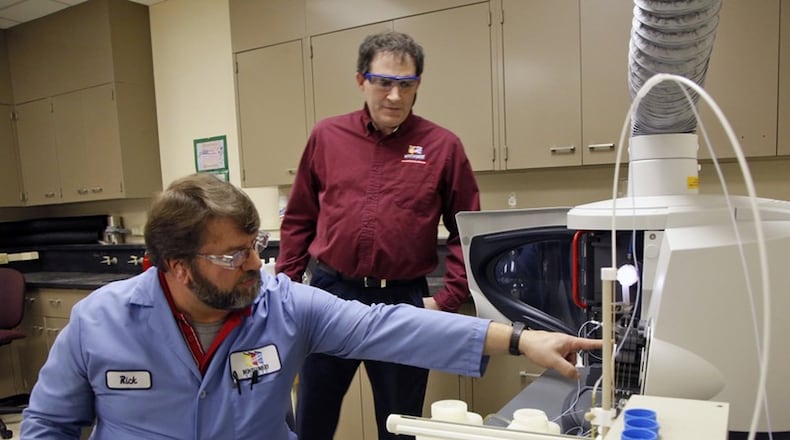Statewide, Ohio children have elevated levels of lead in their blood at more than two times the national rate, according to a 2021 study By JAMA Pediatrics.
The Ohio Department of Health tracks annual lead screening data. The most recent state data, from 2022, shows more than 200 children in area counties had levels of lead in their body exceeding 5 micrograms per deciliter. This is the point at which lead levels are considered elevated, though health experts say there is no safe level of lead exposure for children.
The 2022 data includes 49 kids in Montgomery, Greene, Clark and Butler counties with confirmed levels over 10 micrograms per deciliter.
Children are most commonly exposed to lead by dust from paint, lead contaminated soil or playing with toys that have lead based paint on them. But adults and children can also be exposed to lead by contaminated drinking water, according to Dayton & Montgomery County - Public Health Medical Director Dr. Becky Thomas.
Contaminated drinking water is especially impactful to pregnant people and infants who drink formula, children’s health experts say.
“Even low levels of lead have been shown to damage the brain and impact a child’s intelligence and their ability to pay attention and learn in school,” Thomas said. “Their bodies are still growing, still maturing. It can slow their growth and development.”
According to Medicaid guidelines, Medicaid-eligible children in Ohio should be tested at 12 months and 24 months for lead exposure. If children have not been screened for lead in their blood at these ages, they should get screened before the age of 6.
The Ohio Department of Health has a list of ZIP codes of concern for lead exposure. Montgomery County has 24 zip codes on this list.
Home inspections
When a child’s screening shows elevated blood lead levels, the state sends out health workers from a local health department to talk to families about lead exposure.
If the child’s level is higher than 10 micrograms per deciliter, public health workers will inspect the home and provide an action plan to the property owner. They test interior and exterior paint, the child’s toys and other surfaces a child may interact with, and cooking equipment.
Public Health - Dayton & Montgomery spokesperson Dan Suffoletto said water sampling is “out of the scope” of what occurs during home visits.
“However, it’s a cumulative effect of lead exposure in many sources in the environment,” he said. “So, we have a piece of that. What we’re trying to reduce, and preferably totally eliminate, are the sources that we can help identify to the homeowner.”
In Clark County, case managers work on identification, screening, education and coordination with health care providers and follow up testing of children and pregnant women to lower the incidence of lead poisoning. Water testing is not a component of this process, according to the Clark County Combined Health District.
The majority of elevated blood lead levels in Springfield are a result of exposure to lead based paint and dust, health officials said.
Ken Gordon, the press secretary of the Ohio Department of Health, said it’s not common for health departments to sample water during inspections because it’s not necessary.
“This is because in most cases, the source of blood-lead poisoning in homes is found to be lead-based paint — or contaminated dust resulting from the breakdown of lead-based paint,” Gordon said.
But, if paint is ruled out as the source of contamination, an investigator can move on to look into other possible sources. This includes water, Gordon said.
Gordon said that if water sampling is conducted and the result shows a lead concentration of 15 parts per billion (ppb) or higher, health leaders recommend that residents run water for a minimum of one minute when water has not been used in the last 6 hours before they use it for drinking or cooking. Using bottled water for the preparation of infant formula is another recommended measure.
Montgomery County’s health department said people with concerns about their drinking water can take steps to protect themselves from lead exposure. Boiling water does not remove lead, and warm and hot water can have higher levels of lead contamination. The health department also suggests cleaning aerators regularly and using fresh filters designed to remove lead contaminants.
The Biden administration has proposed federal rules to replace water lines containing lead across the country, but if it goes forward the effort will take years and cost billions of dollars. Area water systems have identified water lines containing lead and are working to identify how prevalent lead pipes are in the region.
About the Author

